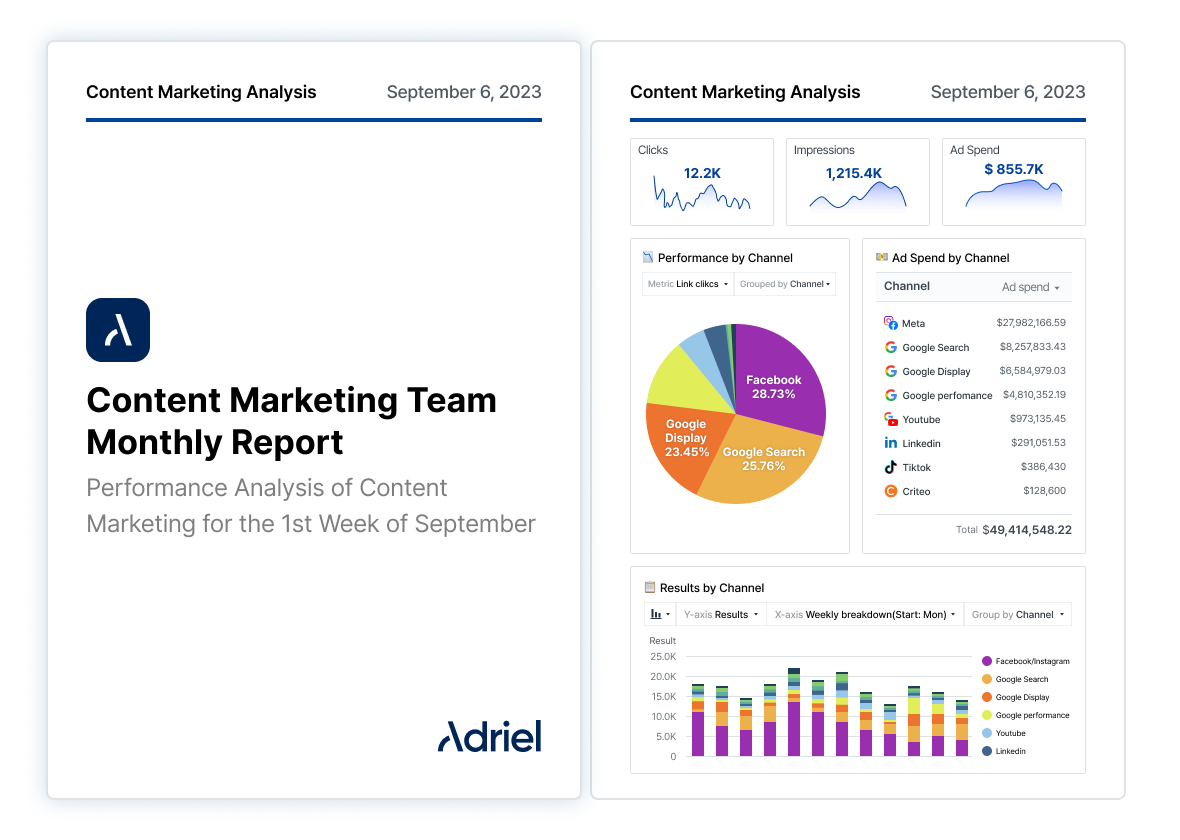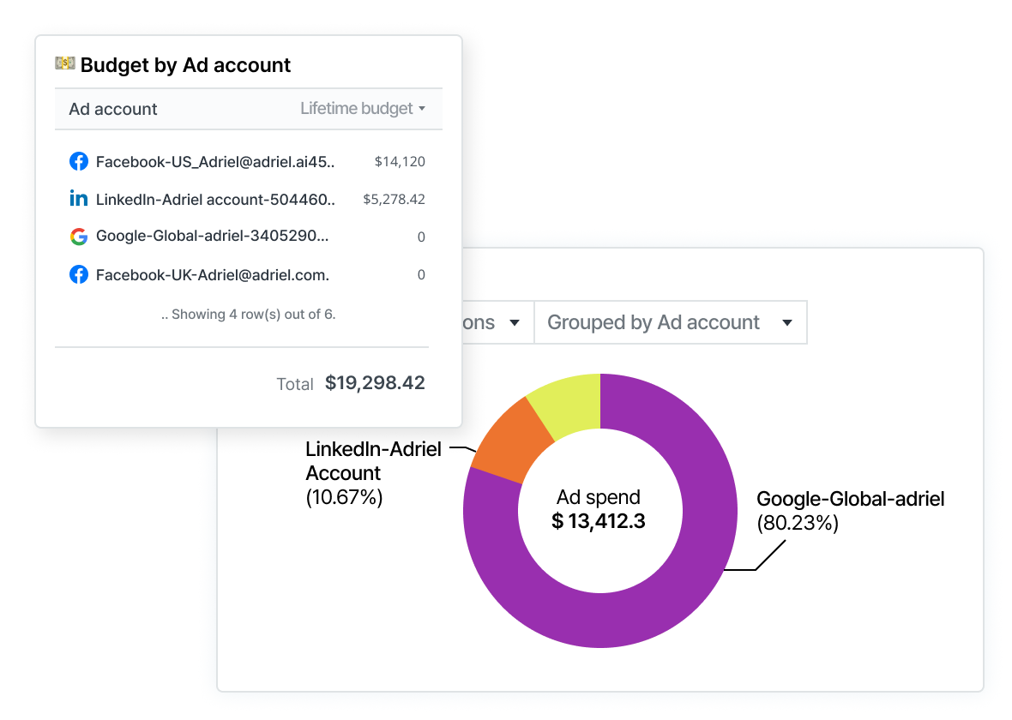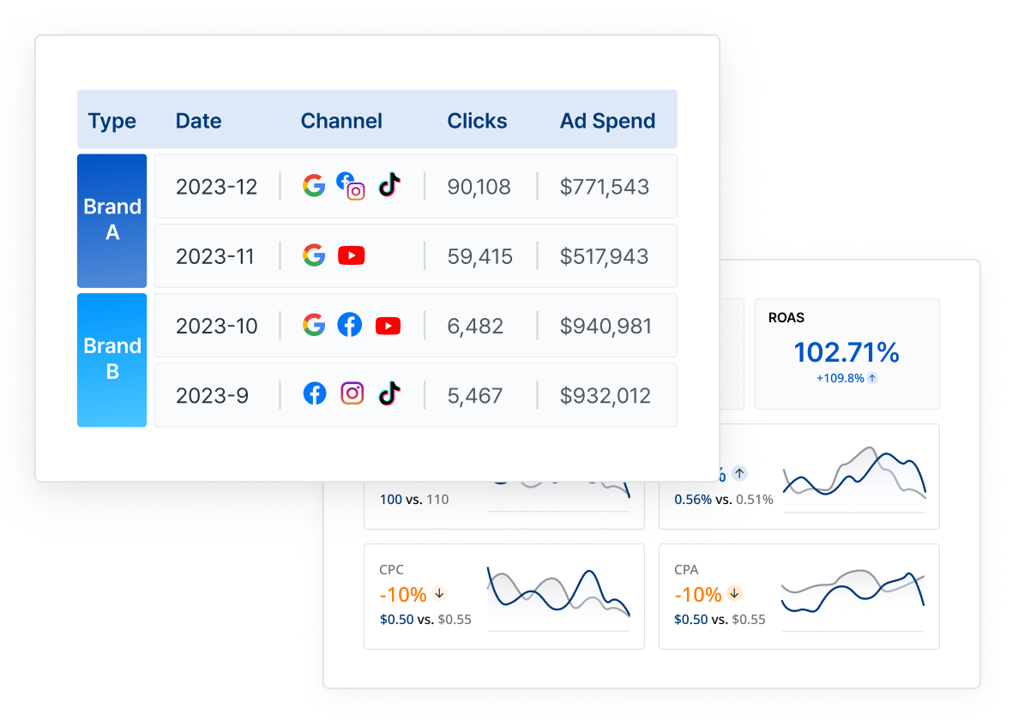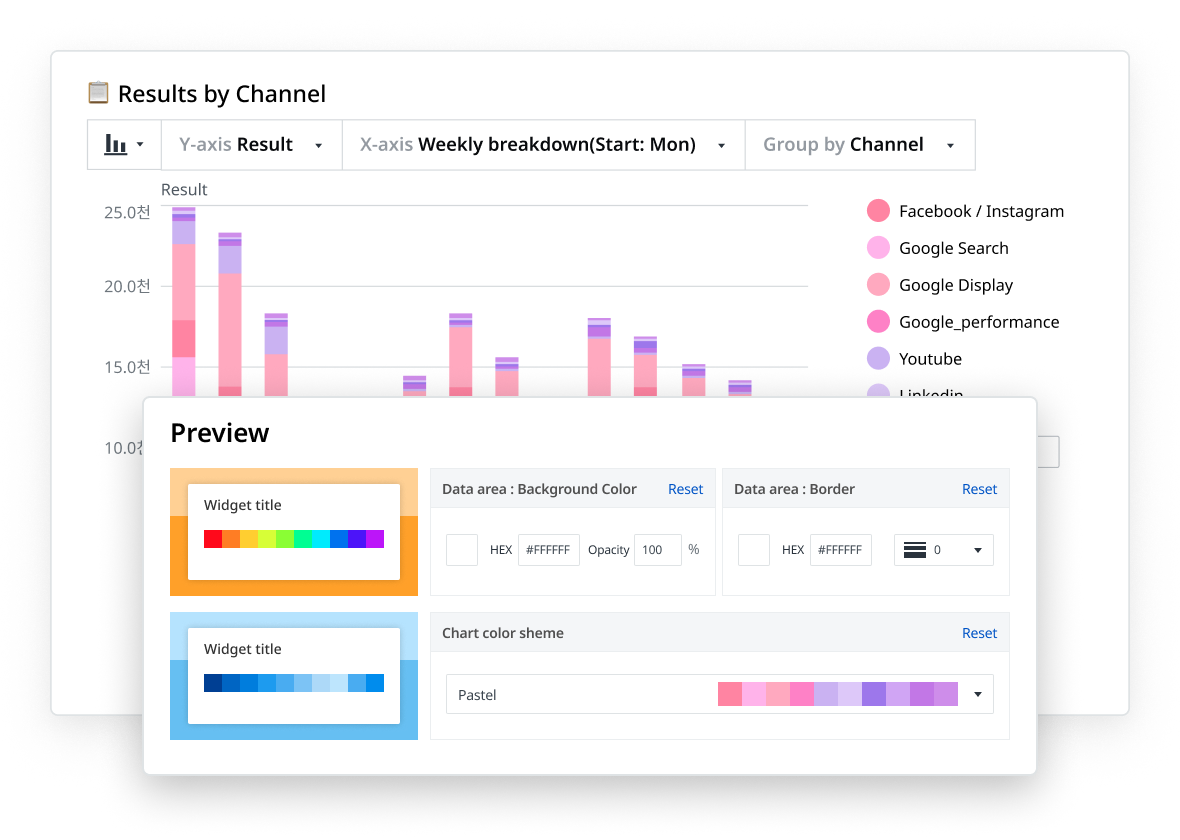Refer a partner and get paid! Earn 20% of all qualifying subscriptions referred to our team 👉

Learn More
No more jumping from one platform to another to manage different campaigns, channels, and clients.
Easily track all your client campaigns in one place with our ready-made agency overview and account management dashboard.



An account management dashboard is a powerful internal management tool for marketing agencies. It centralizes key marketing metrics for all campaigns and channels of all clients in one place so agency team members can collaborate better.
Adriel’s agency overview dashboard helps you stay on top of performance of client’s campaigns in real-time, pounce on opportunities, and generate reports in minutes.
Creating an account management dashboard is as easy as 1-2-3 with Adriel. You just need to create different views for each client and integrate with ad channels from a drop-down list.

Sign up for Adriel with your email after your demo.
You can then select a pricing plan that suits your needs.

Simply choose from a drop-down list to import dimensions and metrics from your client’s ad accounts, analytics tools, and mobile measurement partners.
Adriel supports integrations with up to 650+ data sources, including social media channels, ad platforms, analytics tools, and eCommerce platforms.
And if you don’t see an integration that we support natively, we can create custom integrations just for you.

Use our ready-made templates to instantly see all your KPIs in minutes. Or, start from a blank page and choose your data visualization widgets and graph types.

Set up different views for each account manager or client in just a few clicks. Give different access permissions and collaborate with others on a live dashboard.

Automate your entire client reporting process. Determine your clients’ brand visuals, colors, and logos, and download fully customized reports as PDFs or CSVs. Or share links to the live dashboard with clients.
An account management dashboard should show three things:
Key performance indicators for different client campaigns. This includes:


Your key account goals, KPI targets,
and key performance metrics for each client.









When reporting Meta Ads, you will want to visualize Instagram Ads and Facebook Ads performance side-by-side to understand how each platform is contributing to your digital marketing goals. Here’s how it looks like on Adriel’s report template:





Integrate all your paid ad channels’ results into one marketing reporting dashboard. Curious to know how your Meta, Google, or TikTok Ads are performing? Connect all of these platforms to Adriel, and in less than 5 minutes, show all of your paid campaign results in one unified dashboard. See our integrations page for more information.


You can start from a blank page to create a marketing reporting dashboard, but what if you don’t have time? Our extensive pre-made marketing reporting dashboard library has everything you might need. Try Adriel, and you’ll have more time to research ways to increase conversion or optimize your landing pages.
Our software was expertly designed with powerful functions for marketers. But everything can be customized. Adriel’s flexibility allows you to change all aspects of the dashboard design and appearance. Impress your clients or executives with a professional marketing reporting dashboard report for an expert brand image.













.png)

An account management dashboard helps you track and analyze your clients' marketing and advertising performance.
It gathers data like campaign results, spending, and engagement metrics in one place. This allows you to quickly see what's working, adjust strategies, and keep your clients informed.

Account management dashboards are crucial for agencies because they help you keep a close eye on every client's performance.
You can easily spot trends, adjust strategies quickly, and demonstrate value to your clients, all from one central location. This not only saves you time but also boosts your agency's efficiency and client satisfaction.
These dashboards also play a key role in driving more revenue for your agency. By providing detailed insights into campaign performance and client engagement, you can identify which strategies yield the best return on investment.
This allows you to allocate resources more effectively and pitch additional services tailored to each client's needs, ultimately increasing your agency's income.

If you are an account manager or agency owner, these are the benefits you’ll get from an account management dashboard like Adriel:

To create a clear and comprehensive account management dashboard, follow this structured approach:
Part 1: Performance Summary
Start with a summary at the top of the dashboard that highlights key achievements and activities from the month. This gives a quick snapshot of what has been accomplished.
Part 2: Alerts Widget
Use an alarm widget that notifies you if key performance indicators (KPIs) deviate from pre-set thresholds, either trending upwards or downwards. This helps in proactive management and immediate response to changes.
Part 3: Overview of Key Metrics by Ad Account
Include a section that provides a general overview of key metrics like budget allocation for each ad account. This allows you to monitor spending and performance across different platforms at a glance.
Part 4: Client Overview
Dive into a detailed view for each client. Show notes from previous interactions, goals, and KPI targets.
Include key performance metrics, recent performance trends, and budget information.
This section should be tailored to each client's specific needs and priorities, providing a personalized and focused insight.
Part 5: Performance vs. Cost Comparison
Finally, analyze and compare performance metrics against cost metrics for each client. Highlight the metrics that are most important to the client, such as return on investment (ROI), cost per lead, or engagement rates.
This comparison helps in assessing the efficiency and effectiveness of the spending and strategies employed.
If you’d like a more detailed breakdown of how to structure a monthly client report (with examples and templates), please check out this article.